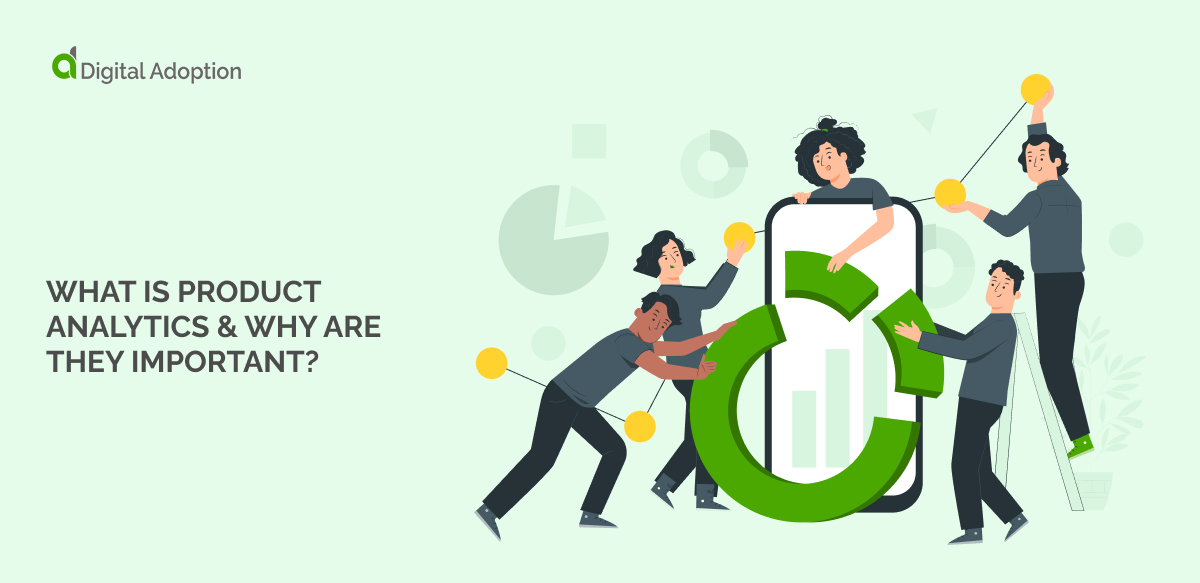Product analytics is a specialized form of business intelligence that focuses on understanding and interpreting customer behaviors and interactions with digital products such as web and mobile applications.
It involves collecting and analyzing user engagement data, tracking key metrics, and visualizing these insights to optimize your customer journey map and enhance product performance. This process enables companies to make data-driven decisions, improve their user adoption strategy, and ultimately drive business growth.
Product analytics involves capturing user engagement metrics and interpreting them into actionable insights, thereby providing real value to a business by guiding strategic decisions and product enhancements.
Each click, scroll, and swipe carries importance. These seemingly minor interactions can unveil a treasure trove of insights into user preferences, pain points, and areas of confusion surrounding a product.
This article will explain the key components of product analytics and how it can benefit businesses in driving customer satisfaction, retention, and revenue.
By the end of this article, you will have a better understanding of:
- The importance of product analytics in today’s digital landscape
- How to use data to optimize the customer journey and increase user adoption
- Key metrics to track and analyze for effective product performance
- Best practices for implementing a successful product analytics strategy
What Is Product Analytics?
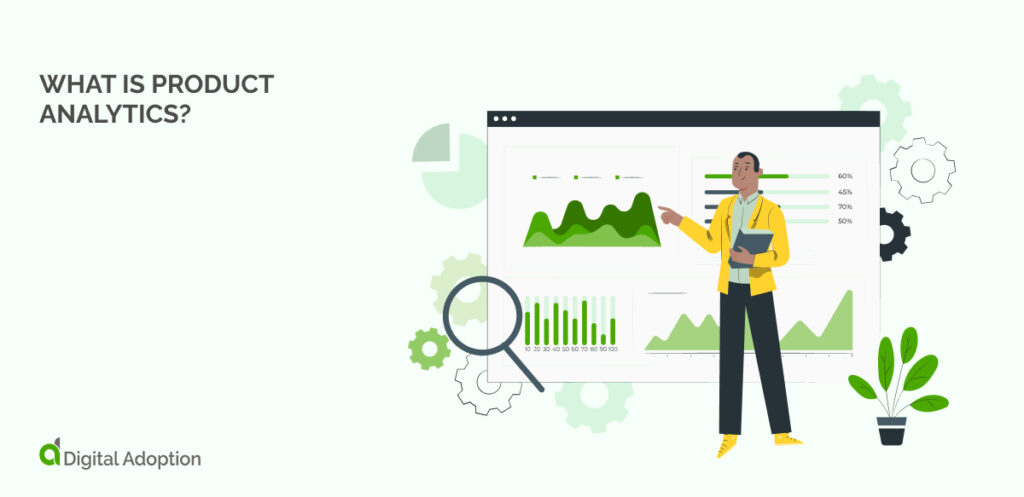
Product analytics is a business intelligence tool that helps companies understand how users interact with their digital platforms, such as websites or apps.
Product analytics plays a crucial role in empowering businesses to make well-informed decisions. Companies can better understand customer behavior and preferences by providing clear and precise insights into product usage.
This knowledge acts as a catalyst for strategic improvements that enhance customer satisfaction and drive long-term business growth.
As a result, a beneficial cycle of success is created, where businesses continuously refine their offerings based on data-driven insights, ultimately leading to a competitive edge in the market.
Why Is Product Analytics Important?
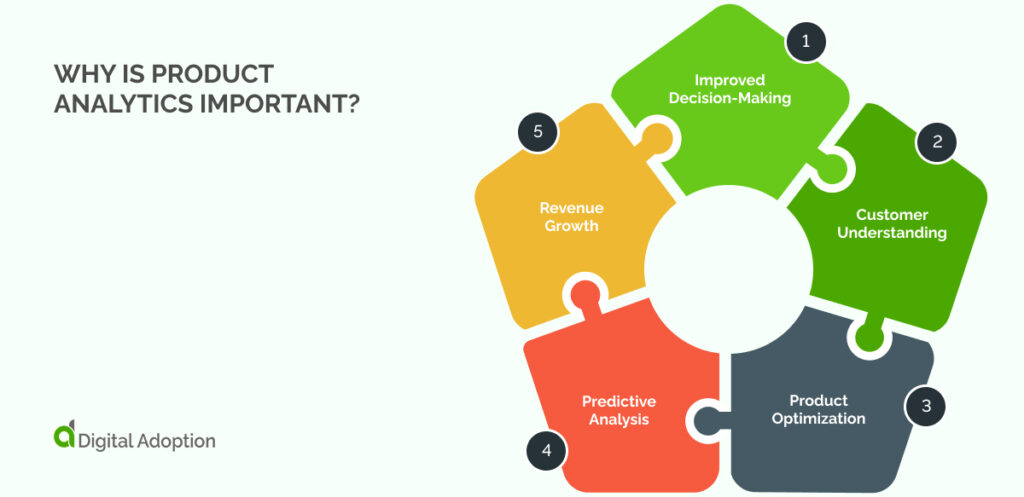
Product analytics drives successful digital businesses, providing key insights for strategic decision-making and fueling growth.
We’ve identified the following reasons why product analytics is important:
Improved Decision-Making:
Product analytics provides valuable data-driven insights that empower businesses to make well-informed decisions. By harnessing these insights, companies can gain a deeper understanding of customer behavior, preferences, and needs, enabling them to drive effective product development, tailor marketing strategies, and devise comprehensive business growth plans based on a solid foundation of data.
Customer Understanding:
It enables businesses to gain valuable insights into how customers interact with their products, providing a deep understanding of user preferences, behaviors, and needs. This knowledge is crucial for enhancing customer satisfaction and tailoring products to meet their ever-evolving expectations. By leveraging this understanding, businesses can optimize their offerings, deliver personalized experiences, and build long-lasting customer relationships.
Product Optimization:
By carefully identifying what works and what doesn’t in a product, companies gain valuable insights to make informed decisions. This information is a guiding light, enabling them to fine-tune features and interfaces to enhance user experience and optimize product performance. With a user-centric approach, companies can continuously iterate and improve, ensuring that their products meet their customers’ evolving needs and expectations.
Predictive Analysis:
With its ability to analyze past and current data, product analytics provides valuable insights that can help businesses stay ahead of the competition by anticipating future trends. By leveraging this predictive capability, companies can make informed decisions and take proactive steps to maintain a competitive edge in the market.
Revenue Growth:
Leveraging insights from product analytics can significantly optimize conversion rates and enhance customer retention, ultimately resulting in substantial revenue growth. By delving into the data, businesses can uncover valuable opportunities for upselling and cross-selling, enabling them to capitalize on additional revenue streams and further enhance their customer experience.
How are Product Analytics Used?
Product analytics tools transform how businesses understand and engage with their customers, offering a dynamic approach to user interaction, personalized marketing, product evolution, real-time performance, and future trend prediction.
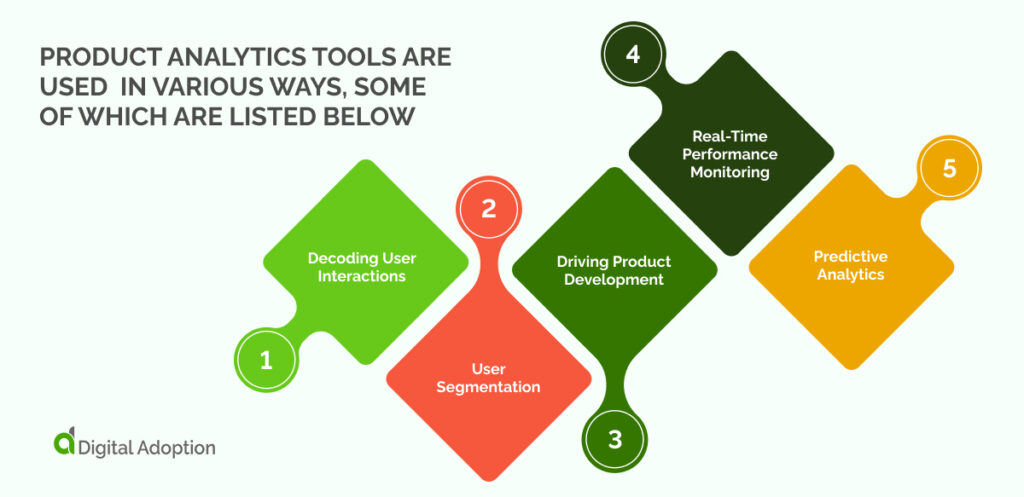
Product analytics tools are used in various ways, some of which are listed below:
Decoding User Interactions – Product analytics tools decode user interactions, highlighting popular features and unveiling user habits.
User Segmentation – These tools facilitate segmentation of users based on aspects like behavior, demographics, or usage patterns, enhancing personalized marketing and product customization.
Driving Product Development – In product development, these tools are pivotal, offering insights from customer feedback and feature usage, directing focus towards areas needing enhancement.
Real-Time Performance Monitoring – They monitor performance in real-time, pinpointing anomalies and triggering alerts for sudden metric changes, ensuring swift issue resolution.
Predictive Analytics – Advanced tools provide predictive analytics, utilizing past data to forecast future trends, aiding businesses in anticipating user needs and adapting to market changes.
What are Examples of Product Analytics Tools?
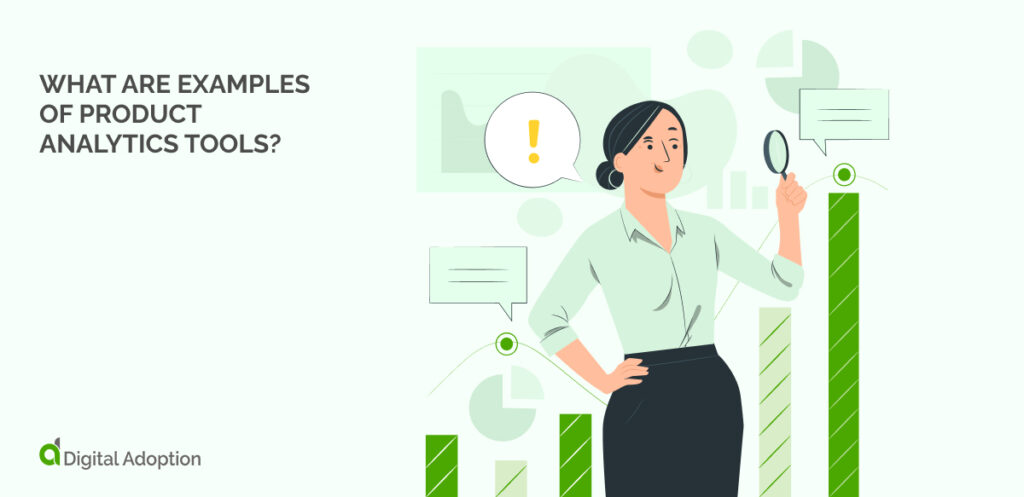
Numerous product analytics tools are available in today’s market. Some of the most widely used options include:
- Google Analytics
- Intercom
- Segment.com
- Heap Analytics
- Kissmetrics
- Mixpanel
- Amplitude
It is crucial to remember that each of these solutions excels in various aspects of product analytics.
However, it is equally important to consider which products excel in other types of essential reports you may want to analyze, such as cohort analyses, retroactive funnels, and event notifications.
Best Product Analytics Metrics To Track
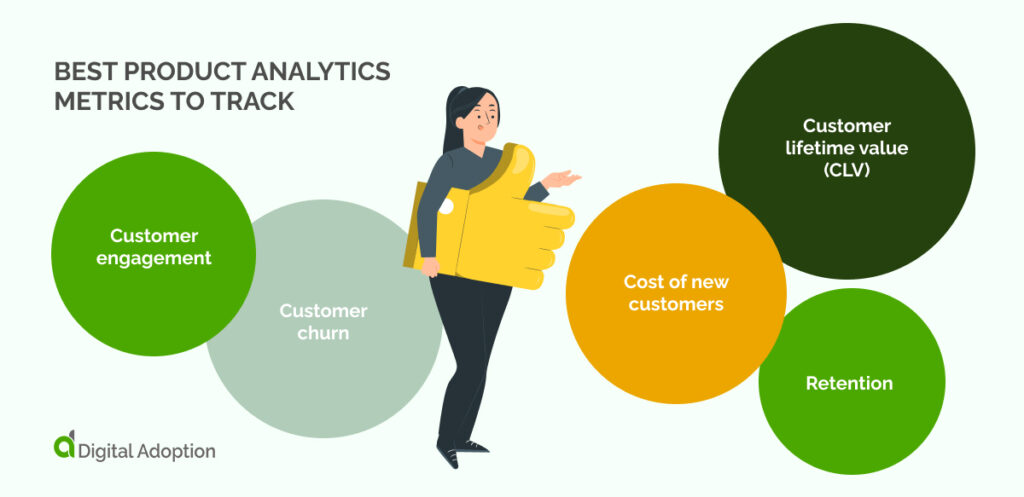
There is no justification for gathering and analyzing every piece of data available. Such an approach only pressures the analytics team to understand it all. Instead, it is advisable to select the metrics that are relevant to your objectives.
If you are unsure where to begin, here are some of the key metrics that a product analyst examines:
- Customer engagement: Use this engagement metric to navigate the customer journey. Gather data on customers’ initial product encounters, activities before registration, their most and least engaging features, and what brings them back. This data empowers you to enhance the customer journey by adjusting your product to meet the needs of new customers.
- Customer churn: Monitoring this metric lets you identify when a customer discontinues using your product so that you can prevent churn from occurring.
- Retention: This metric provides insights into the number of customers who return, the frequency of their visits, and the specific days they return. By examining the behaviors of high-retention customers, you can make your products more accessible to others.
- Cost of new customers: Analyzing this metric allows you to determine the money spent before a visitor becomes a customer. Adjusting your product, you can track whether this figure increases or decreases.
- Customer lifetime value (CLV): This metric goes beyond the monetary value of customers’ purchases. Tracking this metric enables you to analyze the behaviors of your most valuable customers and attempt to encourage others to emulate their actions.
Final Thoughts On Product Analytics
Product analytics is a customer-centric approach that analyzes behavioral data to gain insights into customer engagement with digital products. By monitoring and analyzing real-time data, teams can optimize the customer journey, enhance the digital experience, foster loyalty, and align digital strategies with business outcomes.
Choosing a product analytics solution that automatically collects comprehensive data is crucial. It provides immediate access to required data, eliminating the need for event tagging and waiting for data accumulation. A user-friendly solution with easy accessibility and a straightforward installation process is recommended.
To establish an effective product analytics strategy, evaluate existing data management capabilities, integrate analytics software with current tools, involve a broader team, and learn from businesses that have successfully leveraged product analytics to enhance operations.

